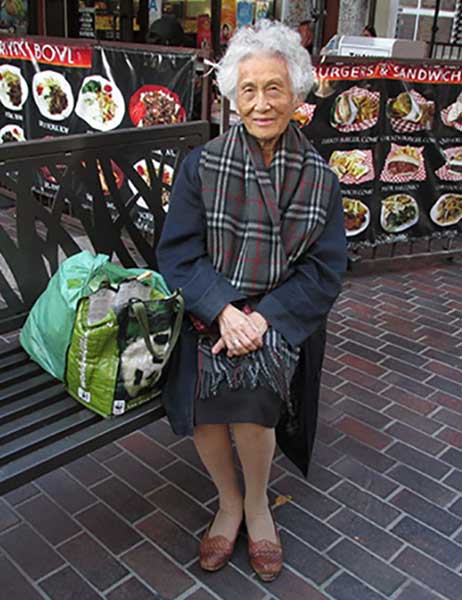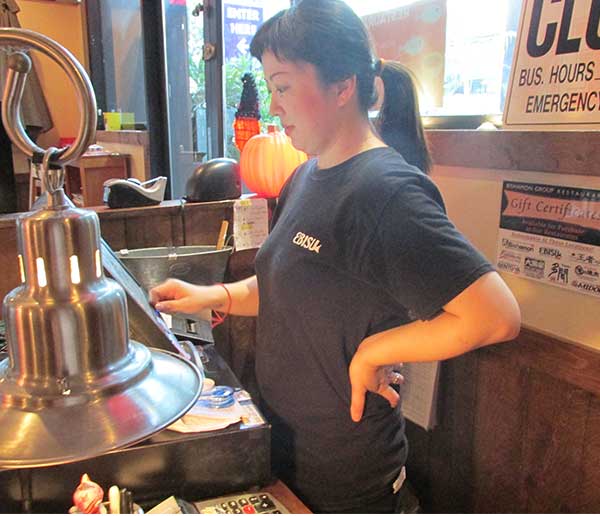In the heart of Downtown Los Angeles lies Little Tokyo- a major historic and cultural center for Japanese Americans living in Southern California.
With roots dating back into the 1880’s, many of the longtime residents of the community are immigrants or descendants of immigrants that came from Japan. Many of the Japanese that moved to the area became involved in agriculture and developed produce markets.
Cecily Umezuka frequents Little Tokyo often and enjoys coming to the Japanese Village Plaza because of the food, shopping and “convenient meeting spots.”
She’s seen the area change significantly over the years since World War II.
“When you’re down here so often, you accept the change and don’t think about it.”
Umezuka is a U.S. citizen of Japanese descent who was born in Boyle Heights, Los Angeles.
“And I’ve been here ever since except for the war years,” she said.

During World War II, the U.S. government unconstitutionally forced all persons of Japanese American ancestry from the West Coast and Hawaii.
“It’s not like I wanted to move. It was Uncle Sam who decided ‘I’m going to move you people’ so at first I went to the Santa Anita racetrack and then moved to Arkansas after that.”
U.S. immigration law is complex, and there is still much confusion about how to navigate it today.
The streets of Little Tokyo are filled with store fronts covered with signs offering immigration assistance and bus benches plastered with the names and numbers of immigration lawyers.
Shirley Polanco deals with immigration issues on a daily basis as a secretary at Los Angeles Immigration and Photo Services in Little Tokyo.
“I work here because I had to go through the process when I first came to the United States,” said Polanco.

An immigrant from El Salvador herself, Polanco helps people with filling out paperwork for immigration, family and employment based petition and green card renewals.
“The people in this office- I was in their shoes not that long ago. I want to help make the process as seamless as possible for them,” she said.
Foreign citizens that want to become a permanent citizen of the U.S. must first get a visa. In order to apply for an immigrant visa, a foreign citizen must be sponsored by a U.S. citizen relative, a U.S. lawful permanent resident or a prospective employer.
In regards to some of the immigrant visa categories, the United States limits the number of visas available each year with certain limits dependent on country.
Asians will likely surpass Latino’s as America’s largest immigrant group shortly after the middle of the century, according to a new study of census data by the Pew Research Center.
The country’s population growth over the next 50 years is likely to primarily be made up of about 88% immigrants and their children. The study, which has analyzed and tracked the impact of immigration on the country’s population for the last several decades, indicates that this surge of immigration will reshape the American population for years to come.
Currently, Asians make up about 6% of the nation’s population and are expected to reach 14% by the middle of the century, the projections say.
Michoko Oka, a hostess at Ebisu Japanese Tavern in Little Tokyo, moved to the states by herself- leaving behind her family, friends and the only life she knew in her hometown of Nagoya City, Japan.

Before moving she was a student, and now, she says, it is difficult to afford to live in the U.S.- especially in Los Angeles.
“Your culture- the way of thought is totally different- it’s really interesting,” she said.
“Especially because we work with Hispanic people from Mexico and El Salvador at the restaurant.”
Moving to a new country was difficult for Kisa Ito, an employee at the Japanese American Cultural and Community Center, as well. She expressed the difficulty in having to learn a new language.
“This is my third year working in the center and I work with Hirokazu Kosaka in the art department,” she said.
Ito moved to the U.S. eight years ago.
“This kind of cultural center is hard to find in my country, Japan. Japanese culture is growing in a different way, and the center is very Japanese but it’s very unique.”
Even though she is from Japan, Ito says that she is still learning a lot.
“I’m still working on my English,” Ito said with a laugh.